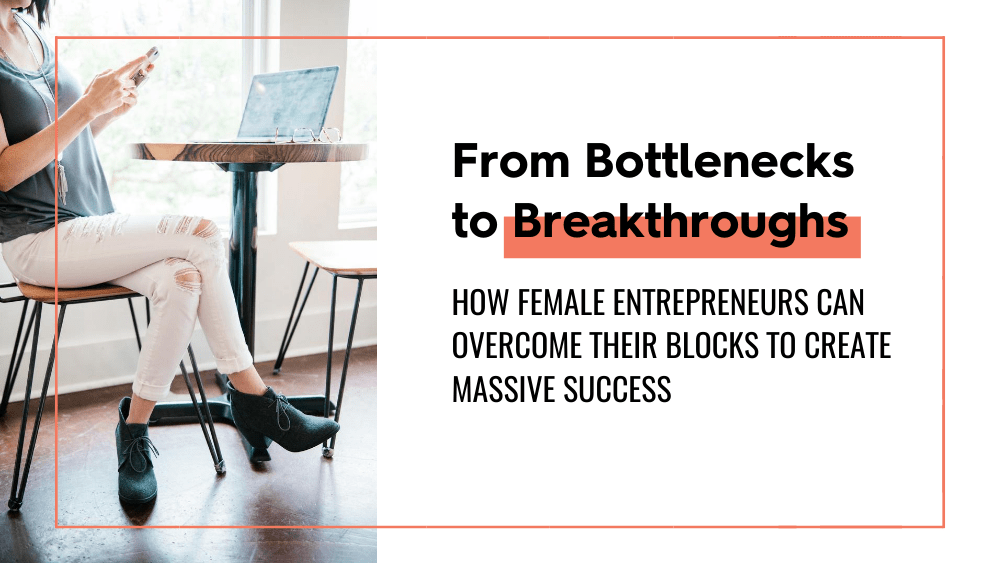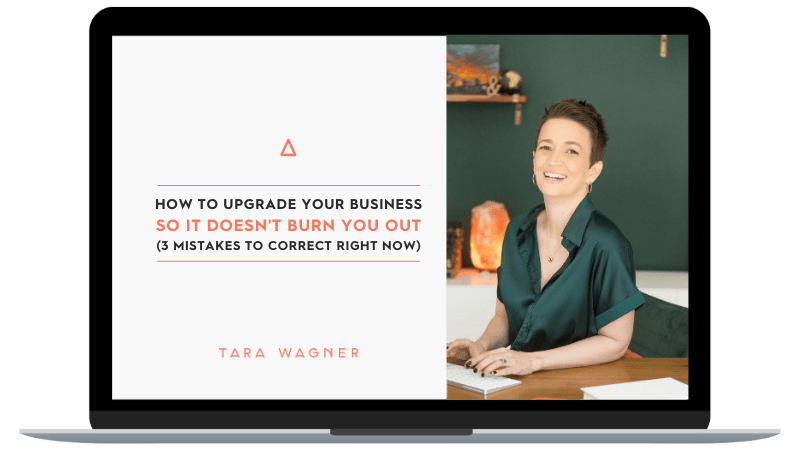This is a big topic. There are entire college courses taught around this topic, but I’m going to try to share what I found the most useful over my last 20 years of business.
Whether you are trying to figure out how to price your art, your services, or a product, I want to share with you some smart pricing strategy examples, tips on pricing in a competitive market.
Be sure to read to the end so that you can learn about my super simple Goldilocks pricing strategy.
Watch here or read below.
I have been in business as an entrepreneur for close to 20 years, and so when it comes to pricing, I have been all over the place, both doing it well and doing it very, very… not well.
I have priced my own products. I have been selling someone else’s products. I have done services in multiple different industries. There are times when I have underpriced. There are times when I have overpriced. There are times when I have freaked out and just not done anything at all (I don’t recommend that as a very good pricing strategy). But what I want to walk you through are the things that have actually made the biggest difference for me.
START WITH THE RIGHT MINDSET
The first thing that we have to do is we have to start out with the right pricing mindset/money mindset.
It’s really important that you detach your sense of self from how much you get paid. There are amazing people and products out there that are what we call economy pricing or they’re charging what we call economy pricing. Then there are people out there who are trying to charge premium pricing and are wondering why they can’t because they feel like they deserve it, but maybe their pricing or their products or services aren’t quite there yet.
I talked about this more in a blog on why charging what you’re worth is terrible advice. If you haven’t read that, I highly recommend you check that one out.
It's really important that you detach your sense of self from how much you get paid. (Tara Wagner) Share on XIn a nutshell, what I want you to do is detached your sense of self from what you charge.
This is business. You are priceless. Your products and services are not.
Your mindset going into this matters, and it matters not just in the sense of you need to feel good to be able to charge more, it matters in the sense of we need to have the mindset of an entrepreneur. We need to feel solid and confident in what we’re doing. One of the best ways to feel solid and confident in what we’re doing is to go through some very practical strategies to understand the best pricing for your product or services and the market that you’re serving.
How do you figure out how to price your art, your services, or a product?

Strategy #1 – Know Your Numbers
The first pricing strategy you need to start is to know your numbers.
There’s a few things that I’m talking about when talking about this.
1. Cost of production – Obviously, you don’t want to charge less than what it costs to actually make the thing that you are making.
If you’re in a service-based business, this may not exactly apply, but you still need to understand the cost of running your business.
2. Cost of running your business – If you have expenses in terms of your email list or running your website, those are all things that need to be considered as well.
3. Cost of living – How much do you need to earn or how much do you want to earn? These are going to help you to kind of start with a baseline number to be able to set your pricing accordingly.
4. How much you can work – Figure out how much you need to make, but also figure out how much you can realistically work.
When you’re looking at your schedule, you may find that, “you know what, I’ve got 80 hours a week to put towards this. Awesome.” You may also find that, “hey, I’ve got Saturdays and Sundays right now because I’m still working a full-time business”.
You need to understand that so that you can do some simple math and figure out what do I need to be charging or earning in a day to be able to cover my monthly expenses if I can only work X number of days per month.
5. How many products you can make/sell – If you have a product, you might be looking at how much art can I realistically make in a month? Or how many products can I make in a month? Do a little bit of math to figure out how much you can realistically earn based on those numbers.
Let me break this down into a really simple example and I’m going to just use some basic numbers to make the math a little bit easier…
Let’s say you’re a massage therapist and you need to make $1,000 a week in order to pay your bills. Let’s say you also know that you don’t want to do more than 20 massages in a week because that would mean burnout. Just doing some basic math, you now know that you need to charge at least $50 per massage to be able to break even. Now, this doesn’t mean that you should charge that, but it’s going to give you a starting point and then you can adjust and play with the numbers from there.

Strategy #2 – Know Your Audience
The next pricing strategy is going to fly in the face of some of the business advice that is out there, but I want you to know your audience and what is their budget.
People will tell you that people will pay whatever price possible for what they really want or need. Yeah, that’s true. We see that all the time. People getting into debt, buying things that they really can’t afford. Does that mean that you should charge premium pricing just because if somebody really needs it, they’ll find a way to afford it, even if that means going into debt for it? Maybe not. Do you want to encourage people to try to pay for something that’s outside of their comfort zone or that makes it difficult for them to pay their groceries? I would assume no.
Now, this doesn’t mean that premium pricing isn’t the right fit for you. It just means that we need to be a little more respectful of people’s budgets and stop assuming that people will afford you if they think you’re awesome enough.
I can think of a lot of amazing, awesome people that I am not going to pay for because it’s so outside of my budget and my budget goals are just as important as the goals that that person might help me to meet.
But here’s the other thing about knowing your audience. Sometimes we come in and we want to do economy pricing. Economy pricing is a pricing strategy example where we’re charging less to try to kind of get a corner on the market. If you’re serving people who are at a higher income level who are used to premium pricing, they might not trust economy pricing. They may look at something and say, “Why is that so cheap?” and move on to someone else.
You really do need to know your audience and what they’re comfortable with paying. This doesn’t mean charging less. It could very well mean you need to raise your prices just to gain the trust from the audience that you’re working with.
Quick note: I want to interject here. When I’m talking about knowing your audience, I mean your ideal client or customer. It’s really easy to take the opinions of your cynical neighbor and make pricing decisions based off of what they think, but are they the person you’re really meant to serve? My point in all of this here is to know the person you’re meant to serve and then determine pricing that serves them. Your pricing strategy doesn’t need to make every person happy. It needs to make your person happy.

Strategy #3 – Market research
Tip number three is to do some market research or find out your competitors’ numbers.
What are other people in your industry charging and what are they offering for what they’re charging? Really do some comparisons between their pricing, their packaging, their products, their services, and yours.
Now, don’t assume that just because everybody’s charging a certain thing, you should be charging that. This is just going to give you an idea of what might be working, not what is working.
You could see somebody out there who is charging a really high price point, but maybe they’re not getting any bites. You need to take into account your geography. You need to take into account your audience. There are a lot of different factors that are going into this, but it’s important to do some healthy comparisons to understand what’s out there and what your audience is seeing and comparing you to.
If you are a service provider, as you’re doing this market research, I also want you to take into account your skills and your experience level because you might be comparing yourself to somebody who’s been doing this for 5, 10, 20 years, whereas you’re just getting started. Or they may have skills in multiple arenas that really add to their overall packaging where you might not have those skills.
All of that is going to help you to adjust your final number or maybe your starting number based on you’re at.
Now, obviously doing comparisons can really put us into an unhealthy place. If you might struggle with this, I recommend you check out my blog on how to stop comparing yourself to other people in an unhealthy way and how to do it in a healthy way instead.
After you’ve done that market research, you understand what other people are offering and charging for those offers, now it’s time to assess what you’re offering.

Strategy #4 – Assess yourself
Look at the product or the service that you’re offering and look at the results that it’s bringing to someone or the benefits that it’s offering them.
Now, this can be tricky, especially because we’re so close to the source. It’s very easy for us to not see the full picture. We think that the widget that we make is just doing the thing that it’s made to do, but really there’s a benefit to them being able to do that thing easier or faster or more efficiently.
You’re not just looking at specific one-to-one results like:
- I create this
- It does this
- That’s the result
But instead:
- how does that result make them feel?
- What are the benefits of feeling that way?
- Are you saving them time?
- Are you saving them energy?
Looking at the benefits and even the benefits of the benefits will really help you to see a little bit more clearly the value that you offer. If you do struggle with this, ask for help. Talk to past customers and ask them:
- “What benefits did you get from this?”
- “What side benefits did you get from this?”
- “What unexpected benefits did you get from this?”
Talk to other people in your industry. Look at their sales pages. There may be little words here or there that are going to pop out at you and say, “Oh yeah, I didn’t even think about that,” but it’s going to help you to add that value to what you’re doing.
The other thing that I want you to do is ask yourself, “how does this differ from what other people are offering?”
We’re not trying to copy other people’s sales pages. We’re just looking for ideas of things we might already be missing, but we also want to find out how do we stand out or, phrased in another way, how replaceable are we? Is what we’re offering the same as what everyone else is offering? If so, it’s going to be harder to charge those premium prices if we find ourselves to be very replaceable.
As you’re assessing the value of what you’re offering, I want you to also assess the skill you have in showing that value.
Examples of this might be:
- How good are you at writing your sales copy?
- If you have a sales page or emails that are going out, are they converting?
- Do you know what you’re doing there?
You don’t have to have it all yourself or know it all yourself. You can outsource these things. But you may have all of the benefits and the results, the most amazing things in the world that you’re offering to people, but if you don’t know how to impart that to someone else in a way that really gets them to say, “Hell yes, this is the person for me,” that’s going to be a major stumbling block and no how good it is, you’re not going to be able to charge that premium pricing if you can’t explain those benefits to the person that you’re trying to sell it to.

Strategy #5 – Gaps and competition
Now what happens if you find a gap in your skills, in your experience level, or you find yourself in a very competitive market?
I had a question from a viewer, Yesim, who is an amazing photographer. She does this incredible family photography. But photography is a pretty competitive market right now and her question is,
“I’ve tried to be at the premium price point by thinking I’m worthy of X amount, but it’s been very difficult to gain market share, and now the rejections I’ve been getting start to make me feel pretty bad inside. I don’t want to be at a price point where I’ll be unhappy or feel unworthy. To some, your advice on smart pricing strategy is more than welcome.”
This is a perfect example of why we need to combine mindset work and practical strategies because no amount of thinking, “I’m worthy of this amount,” is going to change other people’s perception of value or worth.
We’re all worthy of making as much money as we want to make, but that means we have to do the work to get to the point where we can offer that amount of value.
What do you do when you’re in that competitive marketplace and you’re trying to get a foothold and you want to do premium pricing and your work, your talent definitely says that you should be able to charge premium pricing, how do you stand out?
The mindset that I want you to take on this is that this is a riddle to be solved and not a stumbling block to trip over, to worry about, or to feel shame over.
Because what we charge and what other people will pay has nothing to do with our self worth or our value. It’s just a riddle that we get to solve.
In order to solve that riddle, I’m going to give you a list of questions to ask yourself…
How can I stand out?
When you’re looking at the people in your industry, what are they doing and what can you do differently?
This could be in the services that you offer, but it could also just be in maybe the pricing, the experiences or some problem that you can solve. How can I up my game? What can I add to my services to add more value? What problems do my clients or customers face that I can solve by doing something differently?
Now, here’s the thing with this one… This isn’t just about what problems are they facing in their life that my product or service can solve, but what do they face when they are looking for my product or service?
This could be anything from the online experience, the payment experience. In the terms of photography, and this is just an example, but perhaps one of the biggest challenges they face is getting their kids up and dressed and out the door. Maybe you’re going to start coming to them to solve that problem. What do my people really want and how can I bring more of that, not just into the finished product, but every step of the experience?
Let’s say for instance, you’re a photographer, your clients really want memories. That’s what they’re really after. How can you make every step along the way magical, fun, exciting, or whatever it is your particular brand is promoting?
- Can you bring that into the website experience?
- Can you bring that into the payment experience?
- Can you bring marketing, fun, branding, fun words, fun images into everything you’re doing?
- If they’re coming into a studio, what can you do to make that studio the most fun, most inviting thing they’ve ever been to as soon as they walk in the door?
Now these are just some examples, but I want you to take these questions and really look at what you can do to stand apart. Because the way to really gain premium pricing is to gain raving fans. When people are loving or laughing or enjoying every single tiny, minute detail of the experience, they’re the people that are most likely to either come back for more or send more people your way.
The way to really gain premium pricing is to gain raving fans. (Tara Wagner) Share on XWe’ve covered a lot so far, but I have two more things that I want to share. One more tip, and then my Goldilocks pricing strategy.

Strategy#6 – Be willing to experiment
The last tip is to be willing to experiment with your pricing.
It’s okay to start low and increase over time. This was something that I did when I started out as a massage therapist. It’s one thing that I did when I started out as a coach as well. This can be an amazing way to gain testimonials, to get experience, to figure out exactly what people want and be able to craft something that people will pay more for.
But the opposite is true also. It’s okay for your pricing to dip down. If you’re at a high price and you’re just not hitting those numbers and you’re experimenting with everything, maybe you need to experiment with some other products or services that you can offer at a lower price point, some discounts, some bundles, packages, things like that, that will enable you to meet your audience’s needs while also getting your bills paid.
Now, this doesn’t make you less of a business owner because you go in with some economy pricing or offer some discounts. That’s a smart pricing strategy if it’s what’s going to help you get your business ahead.
It’s very normal in business to have to experiment with pricing to figure out just exactly where you need to be. But we get to be willing and ready to experiment, to figure those things out. Very few people nail this the first time right out of the gate.
An example of this, using photography again, would be to do something like mini sessions. I’ve seen photographers who will set up at the park for the day and they will book as many families as they can, just doing these quick 15-minute sessions to create some holiday cards or something like that.
Those people are getting a smaller experience and a smaller product at the end of it, but they’re paying less as well. It’s helping them also kind of put their toes in the water a little bit so they can see if this is something that they want to do more of.
Once people have purchased something at a lower price point, they’re more likely to invest in the next price point up because it’s not as big of a jump at that point. If you can find a way to offer a product or service that is less time and output for you, but still brings in income and meets the needs of your audience, that’s going to be your sweet spot.
Pricing tip: Create pricing stepping stones.
My Goldilocks pricing strategy
Okay, I’ve moved over to my whiteboard to show you this super simple Goldilocks pricing strategy. There’s a caveat to this though. Don’t jump right to this strategy. Do your work, know your numbers, know your audience, do your market research, figure out some things first so that you at least have an idea of some numbers running through your head. Then if you still can’t figure it out, you haven’t nailed down that starting price point that you want to start experimenting with, you can try this Goldilocks approach. It’s super simple.
Grab a piece of paper and a pen and I want you to write down two numbers
The first number is going to be your too low number.
This would be what you would charge and you just wouldn’t feel right about it. It’d be too low. You wouldn’t be able to pay your bills or it just doesn’t, in your gut, feel right. That’s your first number.
The second number you’re going to write down is your too high number.
This is the number that makes you feel uncomfortable. Now, most people will say, “Oh, if it makes you feel uncomfortable, you should charge that number.” That’s baloney. Because if you feel uncomfortable with this number, you’re not going to feel confident telling people that’s your number. If you don’t feel confident, you’re not going to impart a sense of trust to that person and they’re not going to pay that price.
You get to feel confident and comfortable. Figure out what would just feel totally not worth your time and energy and what would make you super, super squeamish. Then what’s the average of those two numbers?
Let’s say that $50 is your too low number. There’s no way you could charge that for your product or your service. You’re too high number would be like, “I know people are charging it, but that does not feel good to me“. A thousand bucks. What’s the average of those two things?
I already did this math, thank goodness. It is 550. How’s that number feel? You can adjust it up or down a little bit, but this will give you a starting point. Again, you’ve got to be willing to experiment.
You’ve got to be willing to play with it. You got to be willing to just start. You can always change things, but you have to get in there order to do that. You cannot feel solid and confident without actually getting experience by getting started.
You cannot feel solid and confident without actually getting experience by getting started. (Tara Wagner) Share on XYou’re ready for the next level, now what?
Now, I mentioned in the beginning of this blog that in order to feel confident and solid in our pricing, whether you’re trying to figure out how to price your art, your services, or your products, that that requires we work on both the practical pricing strategies as well as our mindset. Well, that mindset piece is my Zone of Genius. If you want to learn more about it, I have three different options.
If you want to just dip your toe in, I recommend grabbing my Bottlenecks to Breakthroughs training. This is a free 15-minute training that shows you my exact belief breakthrough framework that I’ve used to help countless women over nearly a decade now uplevel their mindset, breakthrough their limiting beliefs, and crush their goals, not their souls.
Second, I also have an upcoming course on exactly how to uplevel your mindset so you can uplevel your business. Grabbing that belief breakthroughs training will put you on the waiting list for that course. By being on the waiting list, not only will you get first dibs at the course, but you’ll also get special offers I’m running just to that waiting list.
Number three, if you are really ready to step it up, I take a limited number of one-on-one clients and I would love to see if we would be a perfect fit. You can hop on over to my coaching page for more information and the application process to get started.
What about you, boss lady?
I would love for you to leave a comment with your own pricing strategy examples or tips for others to benefit from.





